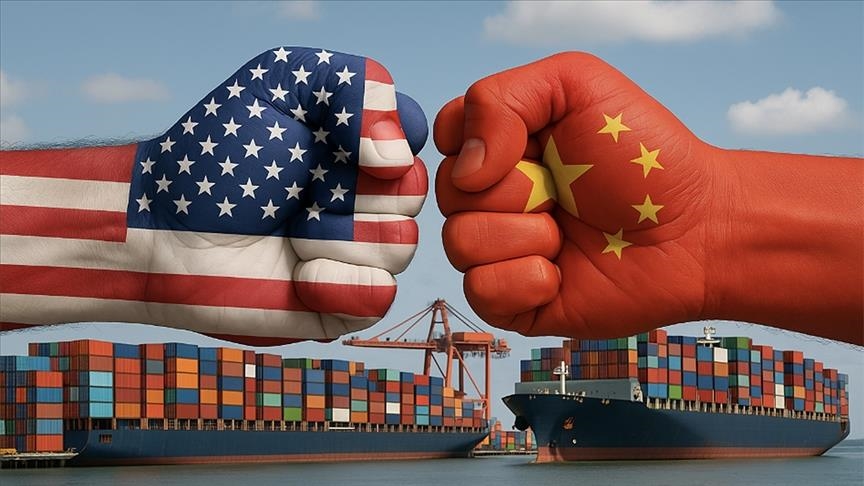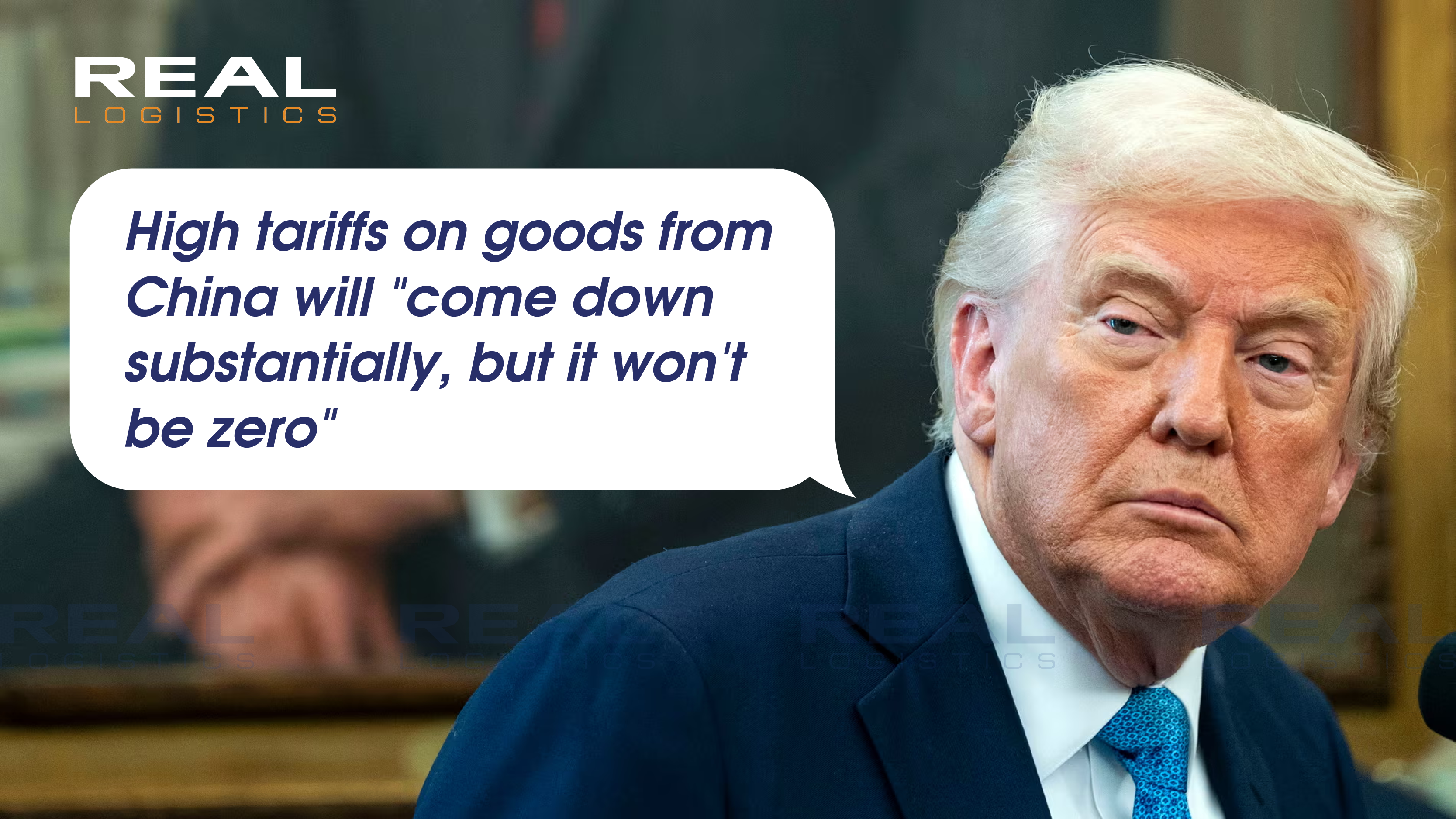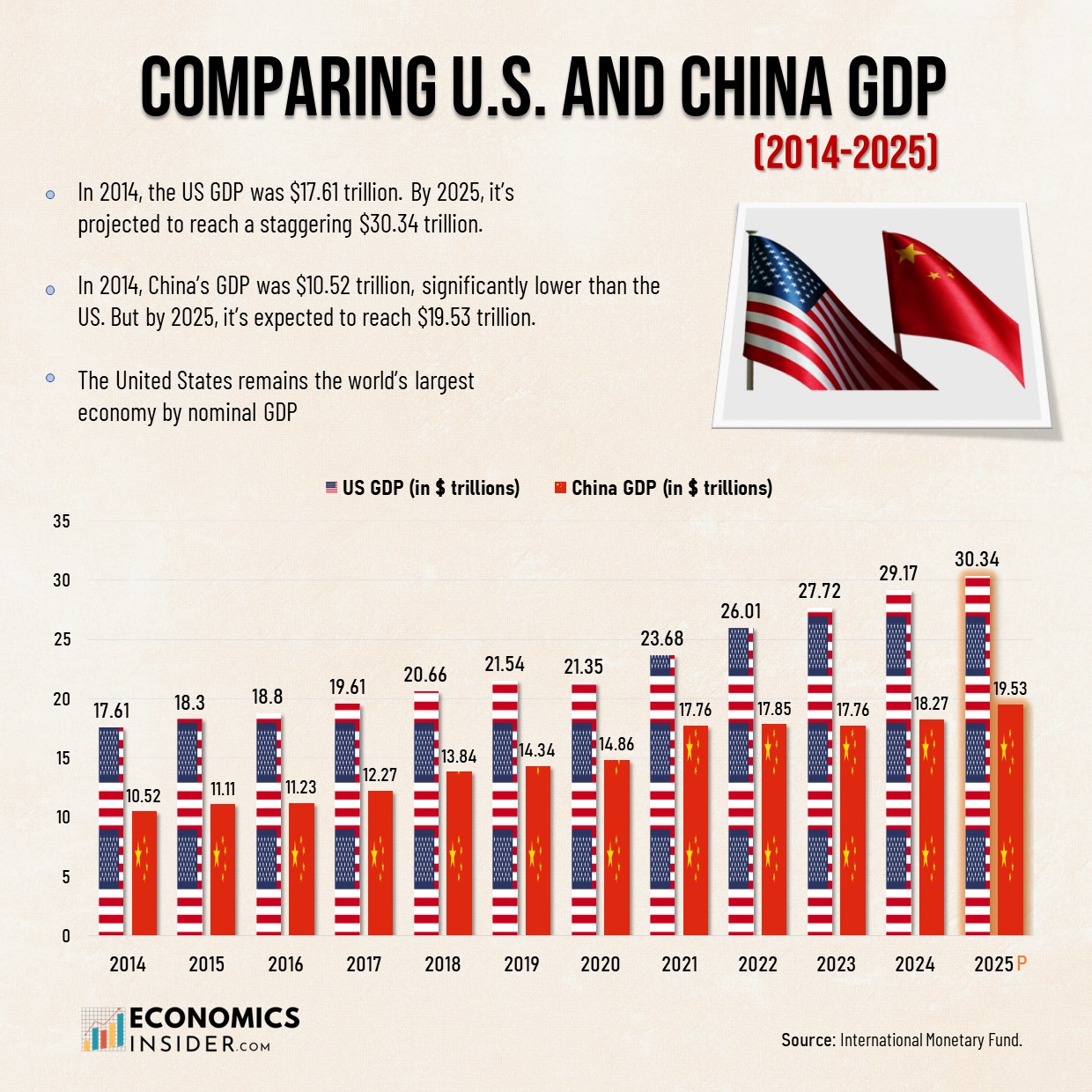

 .
....
.
.

1. Context: From Escalation to Adjustment
The current 145% U.S. tariff on Chinese goods was implemented amid a broader effort to counter what Trump calls “unfair trade practices.” China has responded with 125% retaliatory tariffs on U.S. exports. The resulting trade war has triggered turbulence in financial markets, driven inflationary concerns, and rattled investor confidence.
However, comments from Treasury Secretary Scott Bessent earlier this week hinted at a shift in tone. Speaking in private, Bessent acknowledged that “neither side thinks the status quo is sustainable,” suggesting a recalibration of tariff policy may be on the horizon. The S&P 500 responded positively, jumping 2.5% following initial reports from Bloomberg.
2. Key Takeaways from Trump’s Announcement
- Trump confirmed the 145% tariff will come down “substantially,” without giving specific figures.Tariff Reduction is Imminent:
.3. China’s Response and Strategic Position
In response, China issued a warning to global partners, advising them not to engage in deals that compromise China’s interests. The Ministry of Commerce stated: “China firmly opposes any party reaching a deal at the expense of China’s interests.”
This strategic signaling indicates Beijing’s intent to retain negotiating power, even as it faces increasing pressure on multiple trade fronts.
4. Implications for Supply Chains and Trade Strategy
For logistics professionals, manufacturers, and importers/exporters, the evolving U.S.–China tariff landscape demands proactive strategy:
5. Logistics Perspective: Real’s Strategic View
Real Logistics sees this announcement as a pivotal moment. While lower tariffs may ease immediate cost burdens, the uncertainty surrounding trade policy and negotiations continues to pressure global logistics operations. Long-term resilience lies in diversification, real-time trade intelligence, and robust supply chain planning.
We recommend that businesses:
- Stay connected to trusted logistics and trade intelligence platforms.
- Engage in scenario planning for various tariff rate outcomes.
- Prepare documentation in alignment with U.S. customs protocols to avoid delays as policy shifts take effect.
6. Conclusion
President Trump’s confirmation of tariff reductions signals a potential easing in the U.S.–China trade war, but also underscores ongoing strategic maneuvering. With no return to zero tariffs in sight, businesses must remain agile, informed, and strategically prepared. As always, Real Logistics stands ready to guide clients through every policy pivot in the global trade landscape..
川普笑裡藏刀,習老大笑傲江湖,穩如泰山.
中國與美國搏奕,看誰笑到最後,才是贏家.
中國沒有意願當老大 "? 永遠的老二哲學? 就是老大...
 美麗奸帝國主義霸權的沒落與衰弱是真實現象.
美麗奸帝國主義霸權的沒落與衰弱是真實現象.
西方不亮,東方亮,紅星照耀世界.
美國帝國主義淪亡錄001-005.已經逐漸實現.
哈佛大學與史丹佛大學的研究報告映證.
.川普笑裡藏刀,習老大笑傲江湖,穩如泰山.
中國與美國搏奕,看誰笑到最後,才是贏家.
中國沒有意願當老大 "? 永遠的老二哲學? 就是老大.
 《美國淪為老二!川普如何將未來拱手讓給中國》
《美國淪為老二!川普如何將未來拱手讓給中國》
(We’re Number Two! How Trump ceded the future to China).
USA IS OVER,CHINA SO GREAT RISE UP AGAIN.
.Paul Krugman:「全世界都看得出來川普身邊那些唯唯諾諾的人不會告訴他的真相,他與中國的對抗最終只是突顯了中國的強大與美國的衰弱。」
他並不相信零和思維。從鄧小平改革經濟以來,中國已大舉崛起,而這非但沒有讓美國變窮,反而擴大了全球市場,使美國能以更低成本取得製成品。他說:「一個14億人口國家從赤貧邁入中等收入行列,讓我們變得更富有,而非相反。」
但中國的崛起也重塑了全球地緣政治格局。1980年代,全球主要經濟體都是民主國家,與美國在政治與制度上價值共享。但到了今天,以實質商品與服務產量計算,中國經濟體量已超過美國,遠勝其他國家。儘管中國仍屬中等收入國家,在多個領域卻已出現超前發展,特別是在再生能源與資訊科技方面,對美國構成實質挑戰。
克魯曼指出,他不認為中國是「邪惡」的國家,也不認為美國有與生俱來的主宰地位。但回顧歷史,美國在過去雖非完美強權,卻常以理念驅動行動,象徵著自由價值。這就是為什麼「自由世界的領袖」不只是口號,而是曾經真實存在的事實。.
.
.儘管川普曾對中國加徵高額關稅,如今其實關稅水平已接近美國對其他非加墨國家的平均水準,甚至與歐盟盟國差距不大。更諷刺的是,川普還暗示可能開放輝達(Nvidia)向中國出售先進AI晶片。
.若說這是一場貿易戰,那麼中國贏了。克魯曼分析,問題不只在川普,而在於美中之間的影響力早已失衡。中國對美出口依賴雖大,美國卻對中國稀土供應有極高依賴,而稀土是許多先進科技的關鍵原料。川普加徵關稅時,似乎完全沒意識到中國具備反制能力。
更諷刺的是,川普曾因中國承諾恢復購買美國大豆而態度軟化,而類似的承諾早在他第一任內就已出現,卻從未兌現。他為了一袋黃豆,就把未來押了出去。
整體而言,川普對中國看似強硬,實則失焦。他關稅懲罰的不一定是地緣對手,反而包括巴西——因為他不滿該國處理政變事件;加拿大——因為安大略省播了一則讓他不悅的廣告。這種政策風格與其說是「美國優先」,不如說是「川普情緒優先」。
We’re Number Two!
How Trump ceded the future to China.
.
.Does Donald Trump realize that he has ceded world leadership to China? Probably not: During his recent Asian trip, foreign leaders flattered him and showered him with personal gifts, so he came home with his ego even more inflated than usual. Nobody close to him would dare tell him that if you look at the substance of what he agreed to, it amounted to an ignominious retreat. When Chuck Schumer pointed out the reality of what Trump didn’t accomplish, his reaction was hysterical:
.Well, if this be treason, make the most of it. The whole world knows what Trump’s sycophants won’t tell him: His confrontation with China has ended up demonstrating Chinese strength and American weakness.
Now, I am not a mercantilist. Trump may imagine that the world economy is a zero-sum game, where one nation’s gain is another nation’s loss. But it isn’t. China’s astonishing rise since the economic reforms of Deng Xiaoping hasn’t made America poorer. If anything, the rapid ascent of a nation of 1.4 billion people from desperate poverty to middle-income status (per capita, China still lags America and Europe) has made us richer, expanding world markets and providing us with manufactured goods that would be far more expensive to produce at home.
But China’s rise has created geopolitical problems. As recently as the 1980s all of the world’s largest economies were democracies, allied to the United States both by formal treaties and by shared political values. Democracies as a group still dominated the world economy in the early years of the 21st century. But now China’s economy, measured by the real quantity of goods and services it produces, is bigger than America’s and much bigger than any other nation’s:
Source: International Monetary Fund
In addition to being huge, China’s economy is in some ways more advanced than you might expect given that it is still only a middle-income nation. As I explained yesterday, China dominates renewable energy, one of the most important technologies of the 21st century, and it is giving America serious competition in information technology too.
Why is any of this a problem? China isn’t evil, and while I love my country I don’t believe that America and its allies have any inherent right to rule the world. But by historical standards America was a relatively benign hegemon, largely because we were more than a nation: we were an idea. And the Pax Americana, for all its many failures and sometimes grievous sins, was on balance a force for freedom. Calling us the leader of the free world was more than political boilerplate: It described something real, despite the many blots on our record.
China, by contrast, is not a democracy: It’s an autocratic regime, and those who expected the growth of the Chinese middle class to lead inexorably to political liberalization have been proved decisively wrong. Nor does China seem to stand for anything beyond China.
So China’s rise threatens the liberal, generally pro-freedom world order America helped build. What should we do about it?
The Biden administration took the potential threat from China’s rise much more seriously than most people realize, and tried to implement quite strong policies to contain that threat. In particular, it acted on three fronts:
1. Support for renewable energy: The Inflation Reduction Act provided subsidies for green energy — both for its use, e.g. purchase of electric vehicles, and for domestic manufacturing of key equipment like batteries. These subsidies were intended to serve multiple purposes, including promoting renewables and helping depressed regions, but one goal was to dent China’s dominance of important technologies.
2. Support for advanced technology: The CHIPS Act provided subsidies for advanced technology, especially semiconductor manufacture, with the goal of keeping the U.S. at the cutting edge and reducing our dependence on foreign suppliers.
3. Export controls: The Biden administration imposed controls on exports of both semiconductors and semiconductor manufacturing equipment to China, with the goal of choking off Chinese access to the future of AI and high performance computing.
Would these policies have been effective at constraining China, helping the U.S. maintain a technological edge? We’ll never know, because the Trump administration has abandoned all of them.
America is no longer contesting dominance of renewable energy, because Trump and company hate wind and solar power. They aren’t just canceling the subsidies, they’re trying to kill renewable energy in general.
Trump has harshly criticized the CHIPS Act and the whole idea of using subsidies to promote domestic manufacturing. He prefers tariffs. And as the chart at the top of this post shows, he initially imposed very high tariffs on China. (The tariff rate shown was for April 15 — not the initial “Liberation Day” tariff, but the revised tariff imposed a week later, after Scott Bessent, the Treasury secretary, and Howard Lutnick, the Commerce secretary, convinced Trump to completely revise his plans while Peter Navarro, the trade czar, was in another meeting.)
But now Trump has slashed tariffs on China. According to the Budget Lab’s estimate, tariffs on China are now similar to tariffs on other countries excluding Canada and Mexico. For example, China now faces tariffs not significantly higher than those imposed on our erstwhile allies in the European Union.
And Trump has suggested that Nvidia, which produces the most advanced AI chips, may be allowed to sell to China after all.
So basically Trump has backed down in his confrontation with China. If this was a trade war, China won. Why?
A large part of the answer is that the Chinese had more leverage over us than we did over them. We are or were an important export market for China, but China has a near-monopoly on rare earths, which are crucial for much advanced technology. And China’s limits on rare-earth exports to the United States were a much bigger problem for us than Trump’s tariffs were for them.
Trump didn’t cause this imbalance, which successive U.S. administrations have failed to address. But he was clearly oblivious, imposing punitive tariffs without any apparent awareness that China could strike back.
Trump has also proved willing to be moved by Chinese promises to resume purchases of U.S. soybeans. You might say that he ceded the future to China in return for a hill of beans. This is especially amazing when you bear in mind that China made similar promises to buy U.S. goods during the first Trump administration and never came close to delivering on those promises.
More generally, despite tough talk about China, Trump’s tariff spree hasn’t focused clearly on the key geopolitical issue of rising Chinese power. Instead, he’s been busy imposing tariffs on Brazil because he doesn’t like its domestic politics — they dared to try and convict a former president who attempted a coup — and on Canada, because the province of Ontario aired a TV ad that upset him. Trumpian tariff policy has been less America First than Ego First.
All in all, this whole confrontation has been a demonstration of Chinese strength and American weakness. Add in the way that Trump has alienated our allies, and it seems fair to say that America is no longer the world’s leading power. Unless a future president can engineer a miraculous recovery in our global stature, the future now belongs to China.
..

..USA ASK CHINA HELP ASAP.?.
WHAT"S WRONG WITH USA?
.
..

.

限會員,要發表迴響,請先登入
















